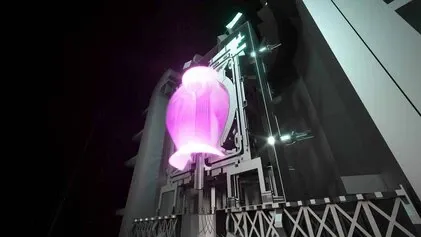What is Fusion?
Humanity faces a future of severe challenges. If we want to continue to flourish, we need revolutionary new technology. That technology is fusion.
Fusion energy promises to be a safe, low carbon and sustainable part of the world’s future energy supply.
Fusion takes place at the heart of the stars and provides the power that drives the universe. By harnessing the process that powers the Sun and stars, fusion has the potential to provide a safe, abundant source of low carbon energy.
It’s also remarkably clean. Fusion is carbon-free at the point of generation. The process itself produces no carbon emissions — the waste product is helium, which doesn’t contribute to global warming. Currently, carbon is used to manufacture the components and buildings needed to start up a power plant — but there’s already a focus on reducing this.
Ultimately, fusion could be an environmentally responsible part of the world’s energy supply in the second half of this century.
Why do we need Fusion?
- Fusion could be transformative for energy security and promises to support the fight against climate change.
- The low carbon energy created from fusion will be used to generate electricity in the same way as existing power stations.
- Fusion has the potential to provide ‘baseload’ power, complementing renewable and other low carbon energy sources as a share of many countries’ energy portfolios.
The Benefits of Fusion Energy
Lower hazard
A chain reaction cannot occur, and the waste produced will be shorter lived, lower level than in fission.
Low carbon
Fusion energy is carbon-free at the point of generation.
High fuel efficiency
Fusion produces more energy per gram of fuel than any other process that could be achieved on Earth.
Sustainable
Fusion fuel is potentially abundant in our seas and the Earth’s crust.
Continuous
Fusion energy is continuously deployable, as it does not depend on external factors such as wind or sun.
How Fusion works:
Fusion energy can be thought of as the opposite of nuclear fission – combining lighter atoms rather than splitting heavier ones.
When two forms of hydrogen are heated at extreme temperatures (10 times hotter than the core of the sun) they form a plasma and can fuse together and release energy.
When this happens, helium is produced, and huge amounts of carbon-free energy is released.
There is more than one way of achieving this. All require heat, pressure, or both.
Keeping a plasma well confined and stable enough to sustain fusion is hard. If the plasma cools, fusion will instantly cease.
This is one reason why fusion is inherently safer than fission.
How safe is Fusion?
- Fusion energy is a safe and low risk technology.
- The fusion process is difficult to start and keep going. It is easy to stop because it needs continuous fuel supply.
- Fusion energy production is not based on a chain reaction, as is nuclear fission.
- There is no risk of a runaway chain reaction which could lead to a meltdown







